
Coilodesme californica
Sea Chip
In situ interactions: 27 May 2021
Fishboat Bay, Juan de Fuca Strait.
Tide: -0.7 ft tide at 10:18am PDT (measured at Sheringham Point Tidal Station)
Conditions: Calm winds, overcast, some precipitation, 11˚C.
Phase of Moon: Waning Gibbous (approx. 30 hours into this phase at time of collection); (Previous Phase, Full Moon, 26 May 2021 at 4:13am PDT: Next Phase, Third Quarter, 2 June 2021 at 12:24am PDT.)
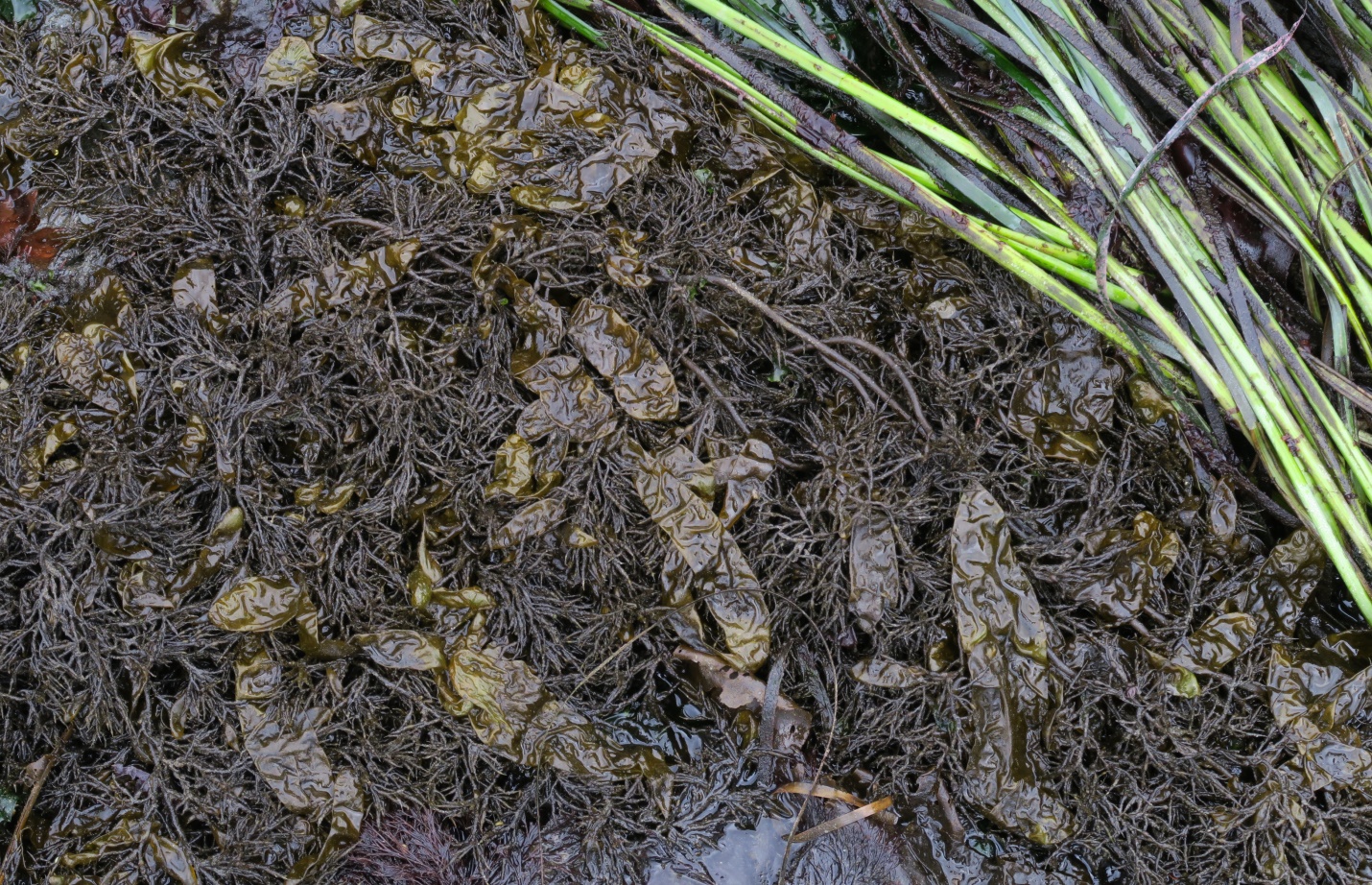
Figure 1: Several wrinkled and flattened olive-brown sacs of Coilodesme californica algae are seen here, lying atop their host seaweed, the bushy and many branched Northern Bladder Chain. Fishboat Bay, Juan de Fuca Strait, B.C., Canada. May 27, 2021. Photo ID 27369 ©Seaweedwhisperings.com
Person 1:
Almost smothers its host.
Looks like oven toasted potatoes.
Up close looks more like a deflated sac.
Ruffled, messy appearance.
Unkempt, but doesn’t care.
In its own world.
Unattractive to others. Others may want to avoid interacting with it.
Doesn’t care about its impact on others.
Poorly grounded.
Doesn’t care and not interested in caring.
Dirty olive brown coloration.
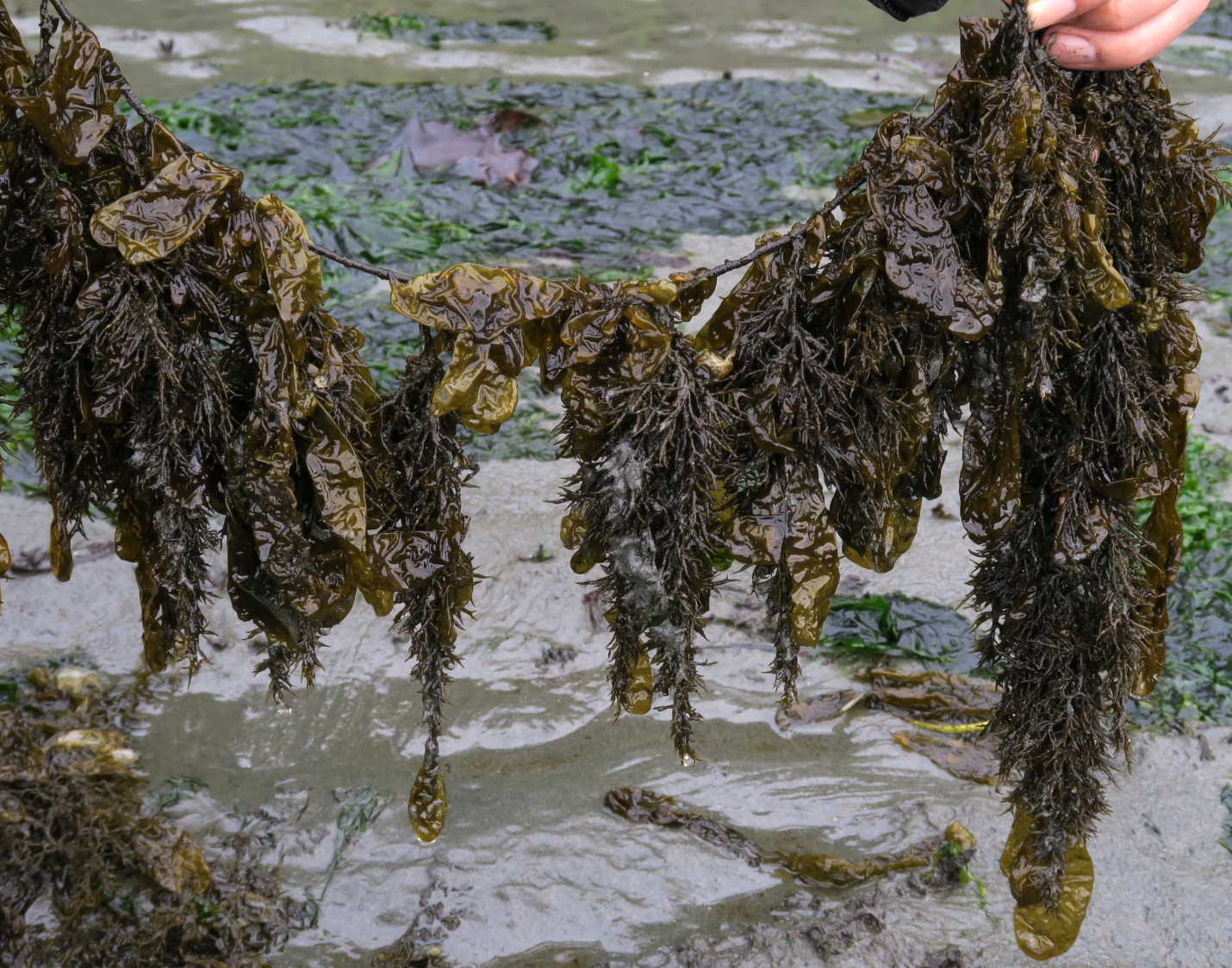
Figure 2: With the Bladder Chain seaweed held aloft, numerous Sea Chip algae are revealed. Fishboat Bay, Juan de Fuca Strait, B.C., Canada. May 27, 2021. Photo ID 27370 ©Seaweedwhisperings.com
Person 2:
You look rather messy like leaves fallen from a tree in autumn as though you’re shriveling and drying on the ground. But you’re alive!
You’ve attached to the long and numerous strands of Bladder Chain.
Flattened sacs, like deflated balloons.
Flattened, but not totally – you all have puckers and protrusions of random patterns that catch the light.
This adds some interest to your bile greenish yellow brown coloration.
But you don’t seek to attract interest.
You’re a camo-gear kind of person! You want to blend to in order to succeed.
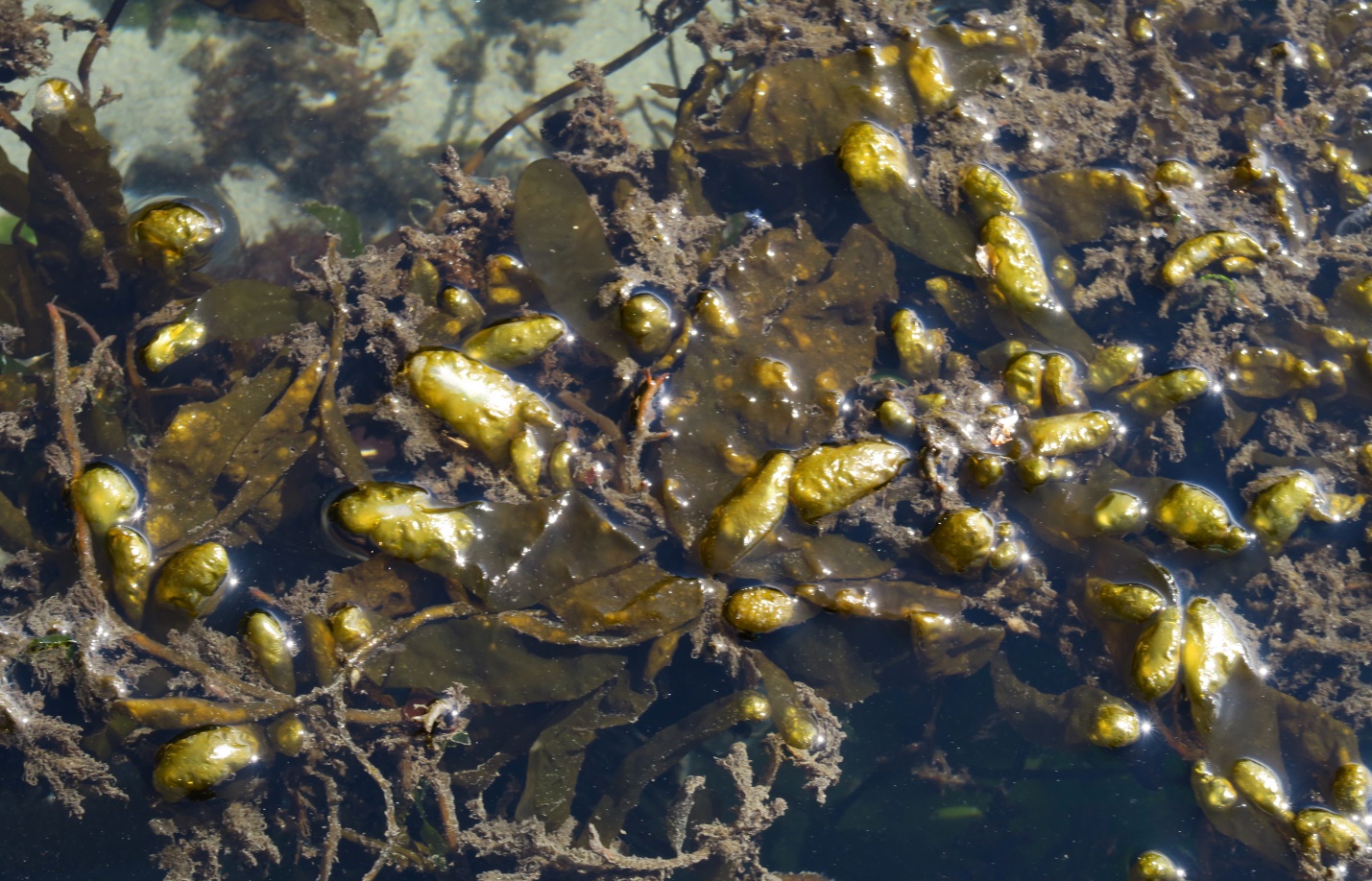
Figure 3: Two and a half weeks closer to the summer equinox, Sea Chip is seen here floating at the surface of calm ocean waters. Sections of the relatively fragile sacs are inflated and blistered looking and while some are entire, some are also torn. Diatom growth has overtaken the Bladder Chain host obscuring its identity. Fishboat Bay, Juan de Fuca Strait, B.C., Canada. June 14, 2021. Photo ID 27371 ©Seaweedwhisperings.com
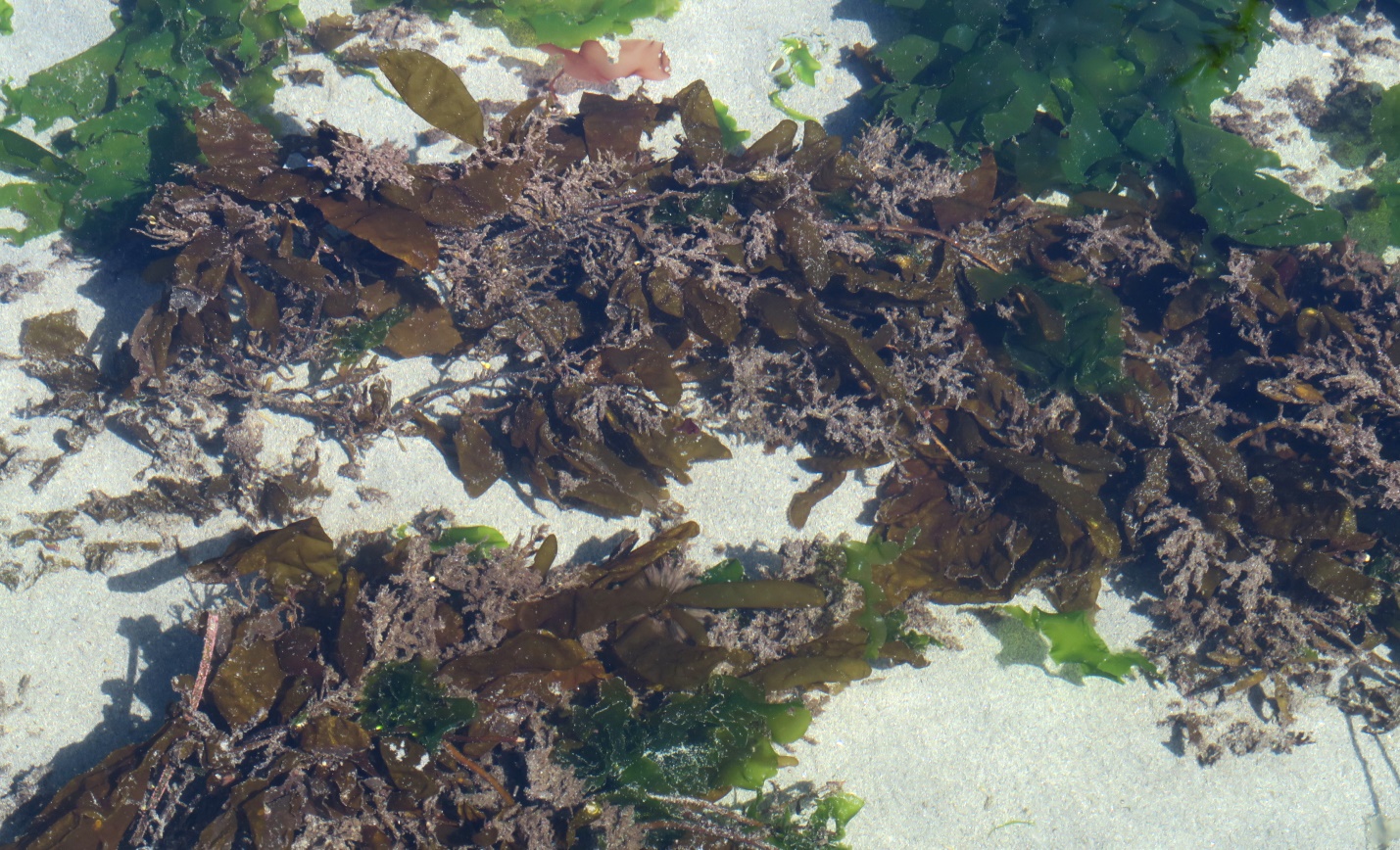
Figure 4: On the same date, two and a half weeks closer to the summer equinox, many Coilodesme californica sacs are viewed here in their underwater state. Anchored to their seaweed host, they look less like sacs and more like oval brown ‘leaves’ of algae. Fishboat Bay, Juan de Fuca Strait, B.C., Canada. June 14, 2021. Photo ID 27372 ©Seaweedwhisperings.com
Person 2:
(Second interaction; June 14, 2021 – 2 ½ weeks later)
Today I saw you at a higher tide and a critical few weeks further along in the intense spring growing season. Many pieces of your host seaweed were fully covered in diatoms and appeared to be totally dusted with a dull pinkish-grey obfuscating coating (almost the underwater equivalent of being coated with fine ash). Along with that issue, the Northern Bladder Chain seaweed (Stephanocystis geminata) was also burdened with you, Coilodesme californica, persisting and also having grown notably larger in size. I do think your presence may become just that, a BURDEN, to those you’ve taken up as your hosts.
Also, your own growth, Sea Chip, progressing with the increasing day length and warmer air temperatures, has had consequences directly impacting you. Where your host has found its home floating atop the water’s surface, well, in these instances, Sea Chip, you look like very imperfectly gas-expanded sacs that are also blistered and in some cases tattered and broken. In its normal state, Sea Chip hides well, this is the camouflage concept in action, but at this stage it is not only more noticeable, it becomes so due to what looks like, at least on the surface, a rather ugly distortion of form. The expanded and blistered part never comprises the whole sac, but usually forms at the end of the Sea Chip that is furthest from its anchor point on the host.
Possibly this state is related to reproductive processes, in fact that’s quite likely, but the impression these Coilodesme californica algae give at this point is one of stress and even mild duress. It’s almost as if the biological necessity of the reproductive effort is something that Sea Chip resists; indeed possibly they must almost be coerced into it, as the feeling is that once fully mature, these little sacs of brown algae will ultimately self-destruct.
In areas where the host alga is fully submerged the individual Coilodesme californica algae seem to be perhaps a bit larger and they look whole and much smoother. The impression these algae give is one of calm contentment. They’re just hanging about lazily and look very well indeed. There’s no indication of the impending end to their life cycle, the climax that surely and necessarily approaches.

Figure 5: Up at the surface once more, the partially inflated and blistered sacs of Sea Chip are dramatically evident and they almost ‘smother’ the host alga, Stephanocystis geminata. Gone entirely is their usual inconspicuous nature. Fishboat Bay, Juan de Fuca Strait, B.C., Canada. June 14, 2021. Photo ID 27373 ©Seaweedwhisperings.com
Biology & Natural History Information:
Description:
Thallus is a light olive-tan sac up to 30 cm long that grows epiphytically on the busy brown seaweed Stephanocystis. The base tapers to a short stipe that measures only 1 – 3 mm long. One to several fragile flattened sacs can arise from a single small discoid holdfast.
Habitat:
Typically this epiphytic brown alga grows attached to Stephanocystis geminata (Northern Bladder Chain), Stephanocystis osmundacea (Bladder Chain) or Sargassum muticum (Wireweed) in the low intertidal and shallow subtidal regions.
Pacific Coast Distribution:
Along the North American coastline from Kenai Peninsula, Alaska, USA, extending south to Islas San Benito, Baja California, Mexico.
Remarks:
The genus name, Coilodesme, is derived from the Greek, hollowed cluster.
Former name(s): Homotypic synonym, Adenocystis californica Ruprecht 1850
Classification:
Phylum: Ochrophyta
Class: Phaeophyceae
Order: Ectocarpales
Family: Chordariaceae
Genus: Coilodesme
Species: Coilodesme californica (Ruprecht) Kjellman 1889
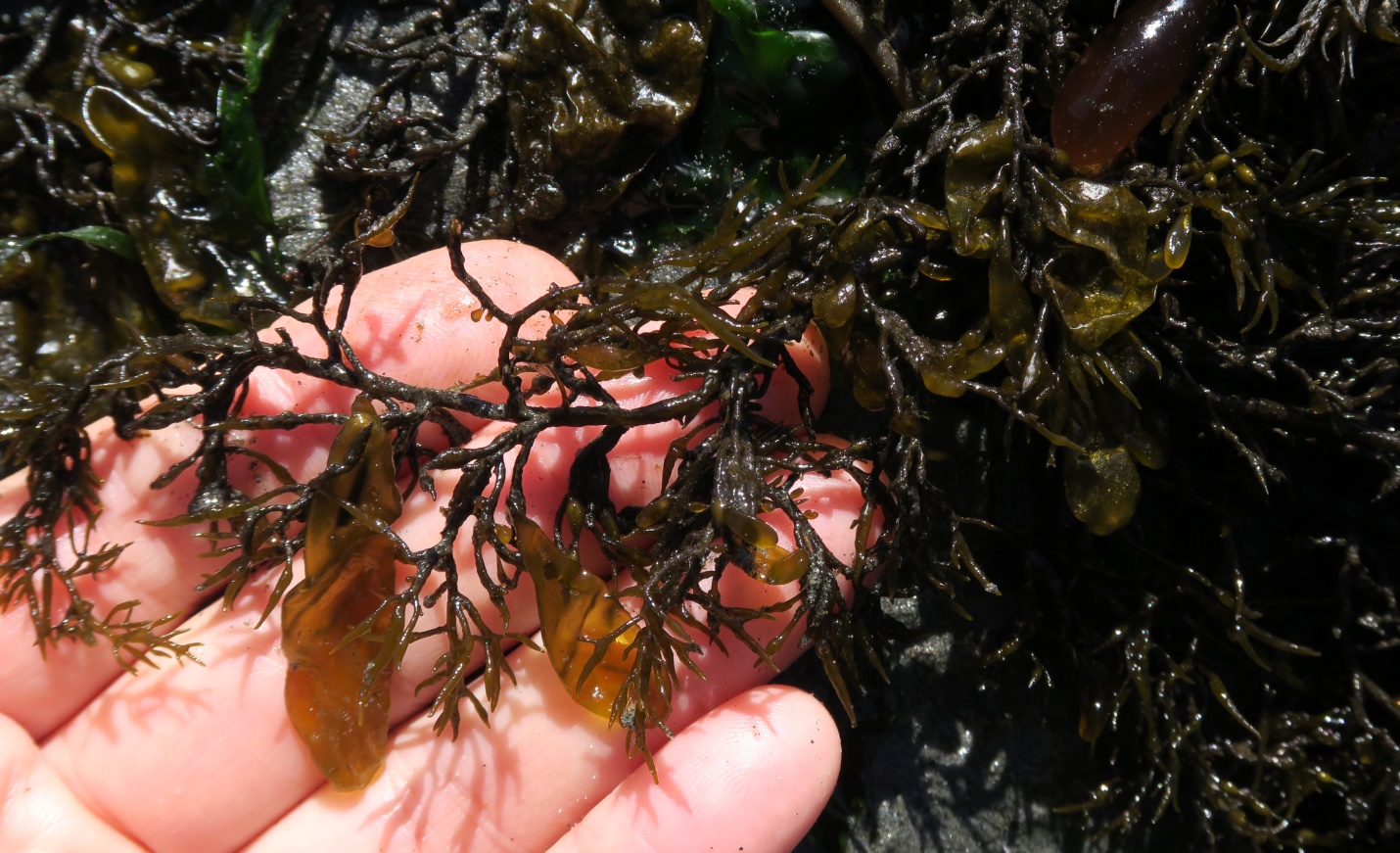
Figure 6: Earlier in the season, the pale brown sacs of Coilodesme californica can be easily missed amongst the greater mass of the many branched brown alga, Northern Bladder Chain. These sacs grow rapidly in size as the long spring days progress. Fishboat Bay, Juan de Fuca Strait, B.C., Canada. May 15, 2021. Photo ID 27374 ©Seaweedwhisperings.com
![]()